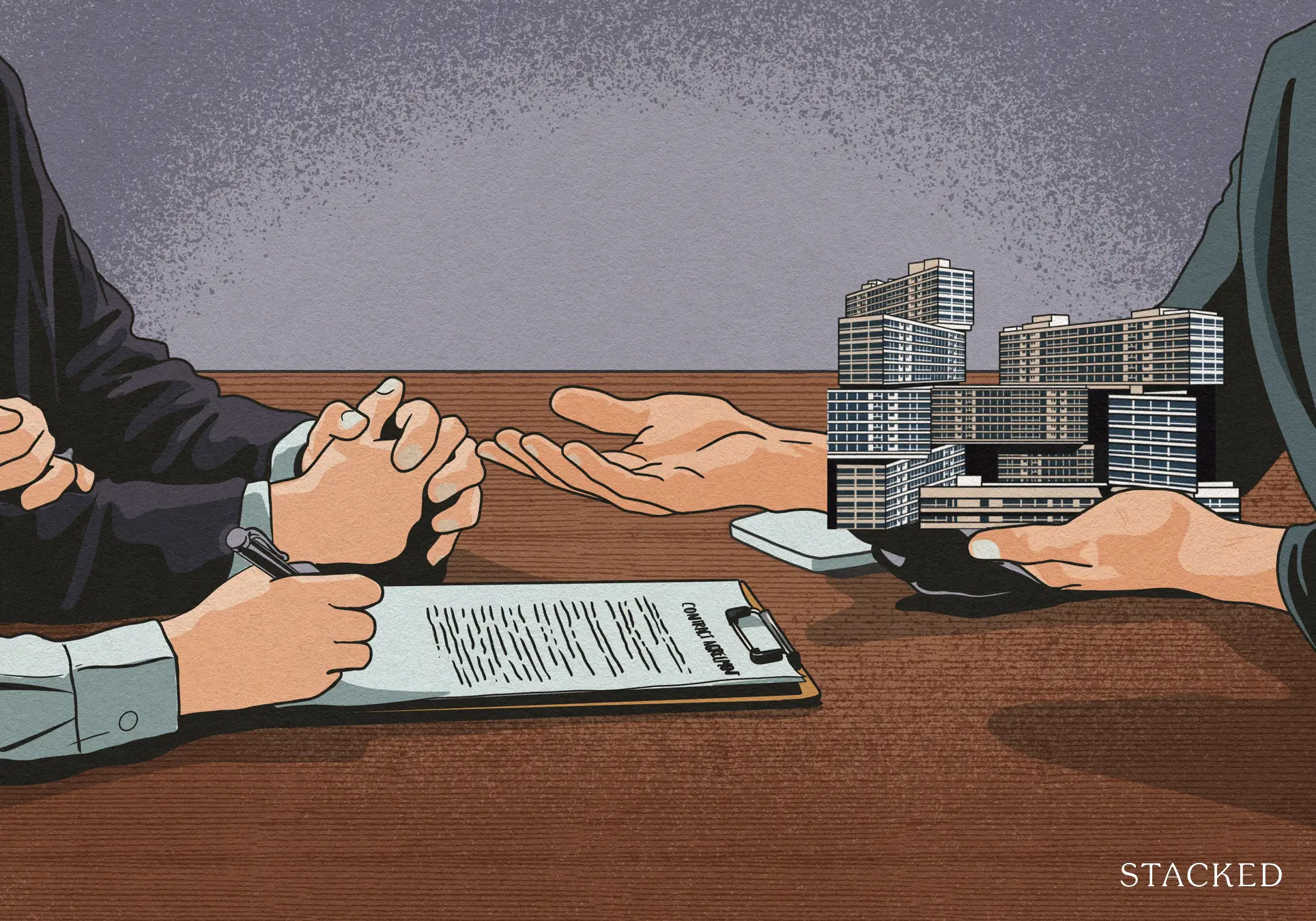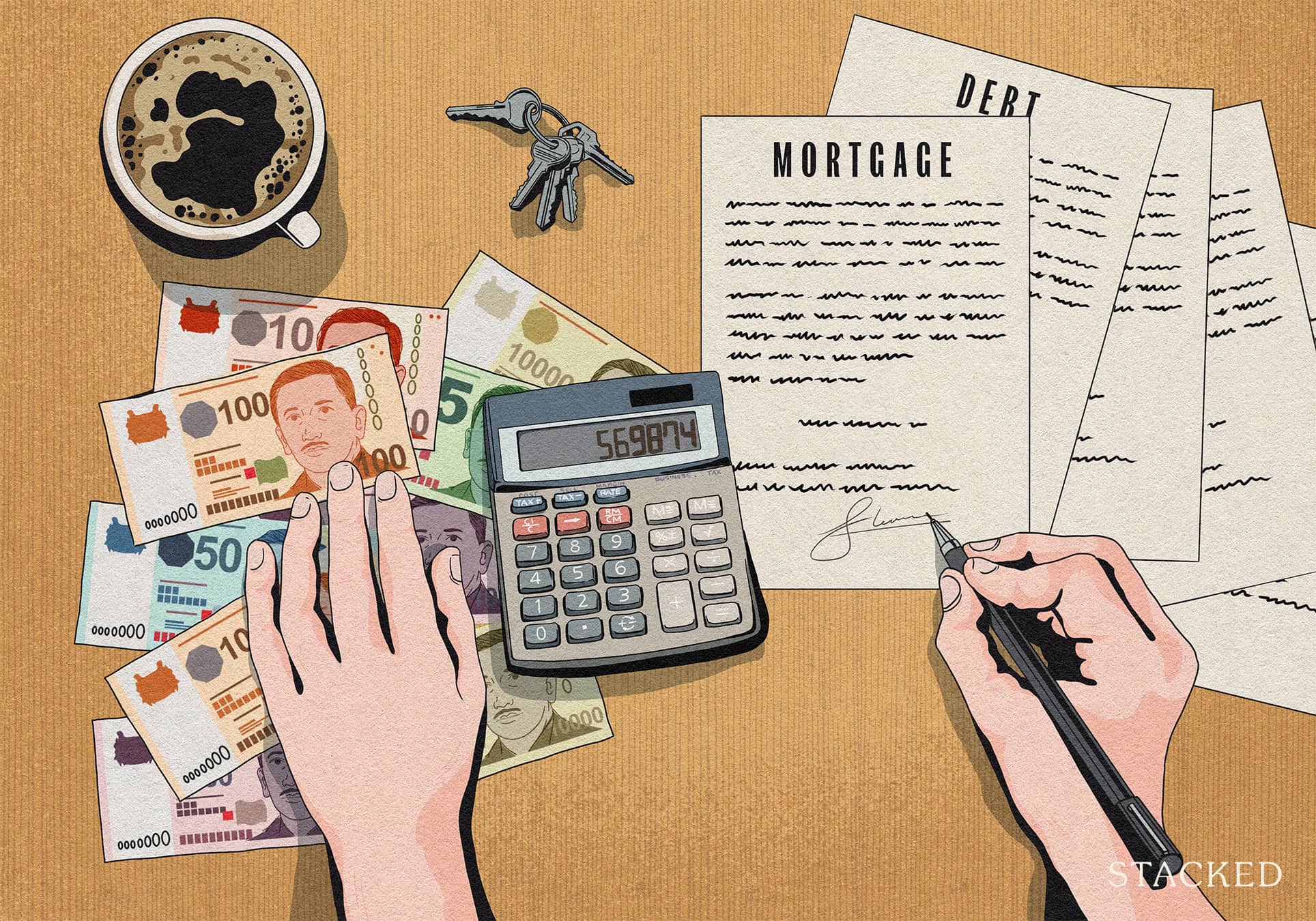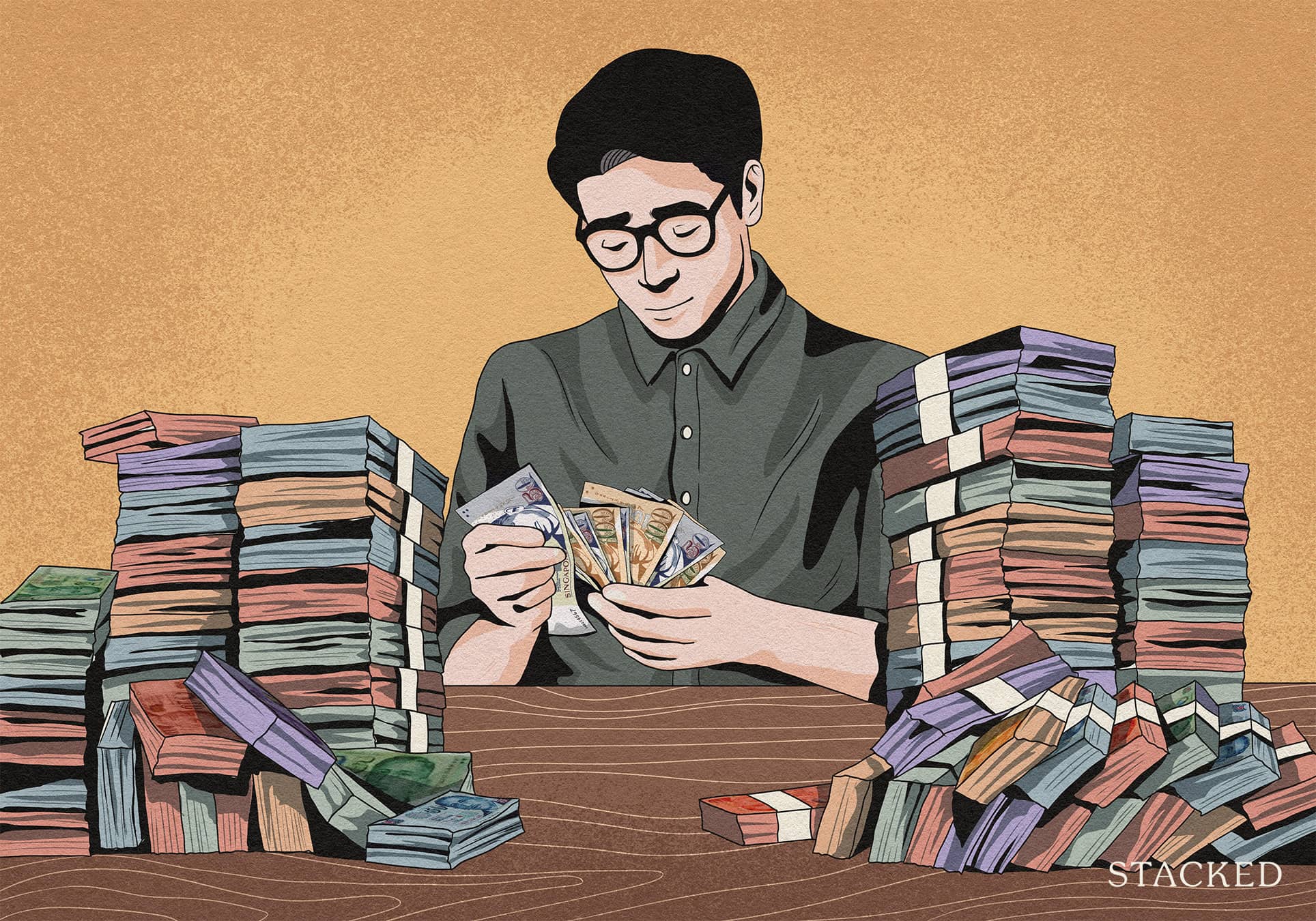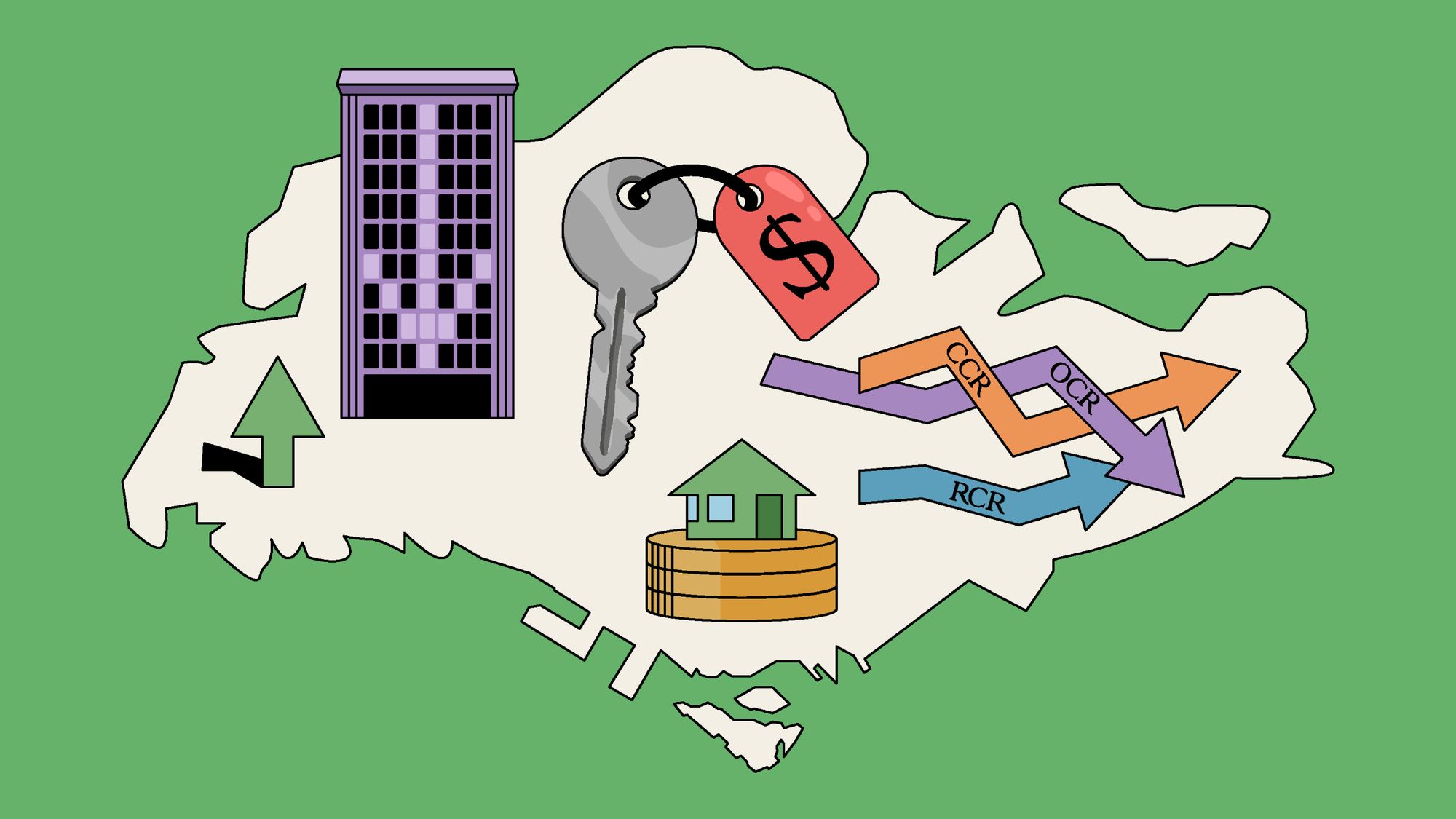Should You Make A Partial Prepayment On Your Home Loan In 2024? Here’s How To Decide

Get The Property Insights Serious Buyers Read First: Join 50,000+ readers who rely on our weekly breakdowns of Singapore’s property market.
A seasoned content strategist with over 17 years in the real estate and financial journalism sectors, Ryan has built a reputation for transforming complex industry jargon into accessible knowledge. With a track record of writing and editing for leading financial platforms and publications, Ryan's expertise has been recognised across various media outlets. His role as a former content editor for 99.co and a co-host for CNA 938's Open House programme underscores his commitment to providing valuable insights into the property market.
Over the last two or three years, home loan interest rates have been rising – and several homeowners have been warned about future refinancing options. Simply put, the era of low interest rates, which we saw from around 2008 to 2020, may be at an end. This is driving some to make partial payments of their home loan, to keep monthly repayments in check. As always though, this sort of financial decision makes sense for some people, but not everybody. Here’s how to decide based on your financial situation:
What is a partial prepayment for home loans?
When paying off your home loan, it doesn’t have to be monthly or all at once. You can apply to pay off a portion of your existing loan, thus lowering future repayments. E.g. :
If you have a loan amount of $1 million at 3.5 per cent, for the next 20 years, you’re paying around $5,800 per month. But if you pay back $300,000 right now (thus lowering the outstanding loan to $700,000), your future loan repayments drop to around $4,060 per month.
(This is a simplified example, and it may not be calculated exactly the same way with all banks).
Note that you can use CPF monies to make partial prepayments on home loans, but this is not always advisable (see below).
Partial repayments have become more common since around the end of Covid, when home loan interest rates started to rise. As it’s unlikely that rates will dip to pre-Covid levels, some borrowers are worried that future repayments will become too much of a burden. As such, they’re making lump sum prepayments today, to rein in future costs.
Another reason for more borrowers making prepayments may be linked to age. According to mortgage brokers we spoke to, you usually can’t refinance your home loan when the outstanding debt is $100,000 or less.
This means that for (usually older) Singaporeans on their last few years of repayment, there’s no way to refinance into a cheaper loan package for the last stretch. So in light of rising interest rates – or just wanting to finish off the mortgage before retirement – these borrowers sometimes choose to make partial prepayments. This is expected to become more common in future, as Singapore is an ageing society.
So why doesn’t everyone do it?
It seems like a good idea, given the rising interest rates; but there are cases where mortgage brokers or financial planners have advised against it. There are certain nuances that make partial prepayment better for some borrowers, but not so ideal for others:
1. The existence of lock-in clauses of waivers
For bank loans, every mortgage broker advised waiting until the end of your lock-in period, before making prepayments. The lock-in period varies based on the loan package; but if you attempt to make early prepayments within the period, you’re usually charged a fee of 1.5 per cent of the redeemed amount. E.g., prepaying $300,000 might come with a $4,500 fee.

(The penalty isn’t calculated the same way for every bank, and some may have further administrative charges).
Some loan packages have a waiver on a specific amount for prepayment. For example, prepayment fees may be waived on prepayment amounts of up to $100,000 or some other figure, so it’s best to keep within the waived amount.
HDB Concessionary Loans are different from bank loans: you’re never charged a prepayment penalty by HDB.
2. How much longer you have to go
This is where CPF usage factors into the equation. If you choose to use CPF to prepay your mortgage, you’re in a sense losing the guaranteed interest rate of 2.5 per cent on your Ordinary Account (OA). This is a good deal for now, when home loan rates exceed CPF interest rates – but remember that between 2008 to 2020, home loan rates from banks were often at two per cent or below, and stayed that way for a long time.
So one consideration is how much longer you have on the loan tenure. If you just started paying for your home loan, and have 15 to 20 years to go, that’s a lot of time in which changes can happen. The high mortgage rates of today may no longer be a reality in five to 10 years. So if you prepay your home loan now, but later on the bank interest rates fall below CPF rates, you’d be losing out.

Conversely, if you’re in the last handful of years, then you’re in the opposite situation: you probably want to finish off the loan quicker, as there are only a few high-interest years ahead of you.
Besides this, remember you need to refund your used CPF monies with the accrued interest, when you sell your property. This includes the CPF monies that you used for prepayment, so keep this in mind if you intend to buy a replacement property.
Prepaying your home loan could make your mortgage insurance less cost-effective
Mortgage insurance pays the outstanding mortgage upon your death (or in the case of some policies, upon permanent disability as well). For HDB flats, this is covered under the mandatory Home Protection Scheme (HPS), which you’re already paying for.
You can probably see how prepaying the home loan could give you less bang for your buck, in terms of mortgage insurance – your premiums may not change (depending on the insurer), but the amount you’re covered for decreases. Check with your specific insurer on how this will work for you.
3. Opportunity cost arguments
We’re not financial advisors, so we won’t go into too much detail here. Suffice it to say there’s an opportunity cost, as money used for prepayment can’t be invested elsewhere.
An argument could be made that rising home loan rates (around three to 3.75 per cent as of 2024) are still outpaced by the returns on other assets. There may be stocks, unit trusts, alternatives, etc. that can outpace home loan interest rates; and you might be better off using windfalls to invest in these, rather than just pay down your home loan.
This is the matter of personal finance though, so you may want to run through the numbers with your wealth manager or whoever you like to consult.
4. Possible changes to your income situation
For those who are switching from employed to self-employed jobs, selling off cash-generating assets, starting businesses, and so forth, partial prepayment can be a safety tool.
If you’re selling a flat or one-bedder that you normally rent out, for example, you’ll have to factor in the loss of future income. In these cases, you may want to use a percentage of the sale proceeds to partially pay off an existing loan, to lower the monthly repayments.

Likewise, if you’re going to switch to a self-employed job, you need to be aware of future refinancing issues. When your income is assessed for the Total Debt Servicing Ratio (TDSR), variable income sources (e.g., self-employment) are calculated as being 30 per cent lower. This means it’s possible that you qualify for a home loan right now, but upon trying to refinance later, you encounter difficulties because your income has dropped on paper.
Another possible concern is one spouse becoming a homemaker, and the family switching to single-income. You might want to work out an affordable monthly repayment under those fresh circumstances, and try to reduce debt levels accordingly. As a loose rule of thumb, you’ll want to try and keep the monthly repayments to no more than 30 per cent of your monthly income. Partial prepayments can make that possible.
Avoid making big partial prepayments for purely emotional reasons
We know it feels uncomfortable to owe money, especially at a time when interest rates are rising. But you should never commit huge sums to partial prepayments, only to end up being cash-strapped in an emergency. Remember that, if you end up needing to use personal loans or other forms of credit, the interest rate will be far higher than what you would have paid for your home loan.
It’s best to use partial prepayments in a targeted way with specific objectives, rather than just using it to get a sense of security.
For more on homeowner issues and the changing real estate scene in Singapore, follow us on Stacked. If you’d like to get in touch for a more in-depth consultation, you can do so here.
Have a real estate question, or not sure what your options are? Email us at stories@stackedhomes.com.
Ryan J. Ong
A seasoned content strategist with over 17 years in the real estate and financial journalism sectors, Ryan has built a reputation for transforming complex industry jargon into accessible knowledge. With a track record of writing and editing for leading financial platforms and publications, Ryan's expertise has been recognised across various media outlets. His role as a former content editor for 99.co and a co-host for CNA 938's Open House programme underscores his commitment to providing valuable insights into the property market.Read next from Property Advice

Property Advice Should We Buy An Old 99-Year Leasehold Condo To Live In: Will It’s Value Fall When The Lease Runs Out?

Property Advice We Own A $800K 1-Bedder And A $1.1M 3-Bedder: Is It Possible To Upgrade To A 4-Bedder Condo?

Property Advice I Own A 55-Year-Old HDB Flat, But May Have To Sell — Can I Realistically Buy A Freehold Condo With $700K?

Property Advice We Own A 2-Bedder Condo In Clementi: Should We Decouple To Buy A Resale 3 Bedder Or Sell?
Latest Posts

Property Market Commentary 2025 Year-End Review Of The Singapore Property Market: What The Numbers Reveal

Pro This 21-Year-Old Condo Didn’t Sell Out Initially, Yet Became A Top Performer

Property Market Commentary How The HDB Resale Market Performed In 2025, And What It Means For 2026 Prices

Property Market Commentary 4 Key Trends Reshaping Singapore’s New Launch Condo Market In 2026

Homeowner Stories What I Only Learned After My First Year Of Homeownership In Singapore

Singapore Property News Why More Land Doesn’t Automatically Fix Housing In Singapore

On The Market Here Are The Cheapest 4-Room HDB Flats in Central Singapore You Can Still Buy From $490K

Pro How A Once “Ulu” Condo Launched In 1997 Became A Top Performer

Editor's Pick I Reviewed A New Launch 4-Bedroom Penthouse At Beauty World

Property Market Commentary When Renting In Singapore Is The Smarter Move — And Buying Can Wait

Editor's Pick Why Singaporean Families Are Looking At This Landed Enclave From Around $4M

Singapore Property News Lentor’s First Condo Is Complete — The Early Profits May Surprise You

Editor's Pick A Wave Of New HDB Resale Supply Is Coming In 2026: Here’s Where To Find Them

On The Market These Are Some Of The Cheapest 5-Room HDB Flats Left In Central Singapore

Pro This 698-Unit Ang Mo Kio Condo Launched At The Wrong Time — And Still Outperformed Peers


